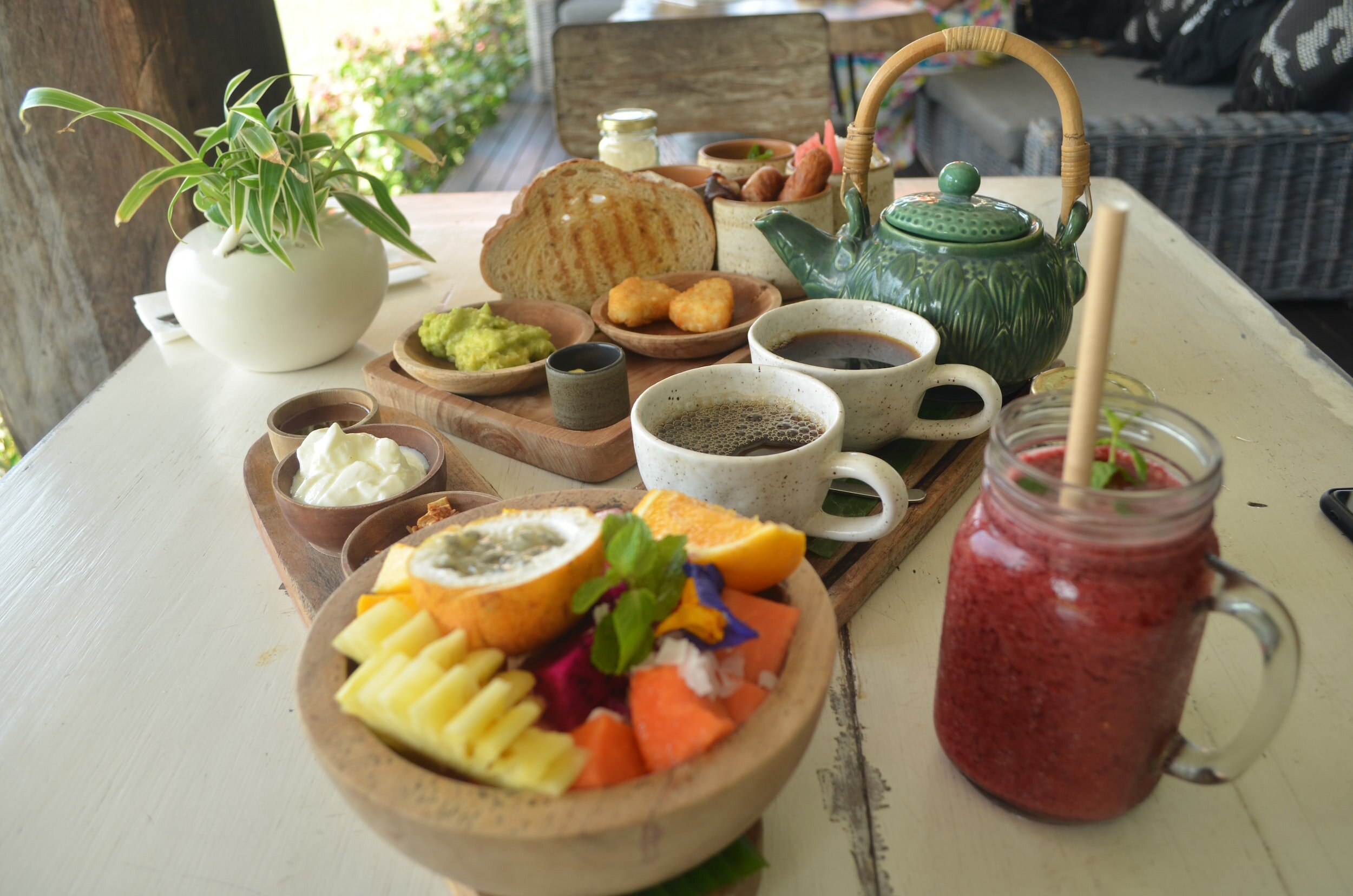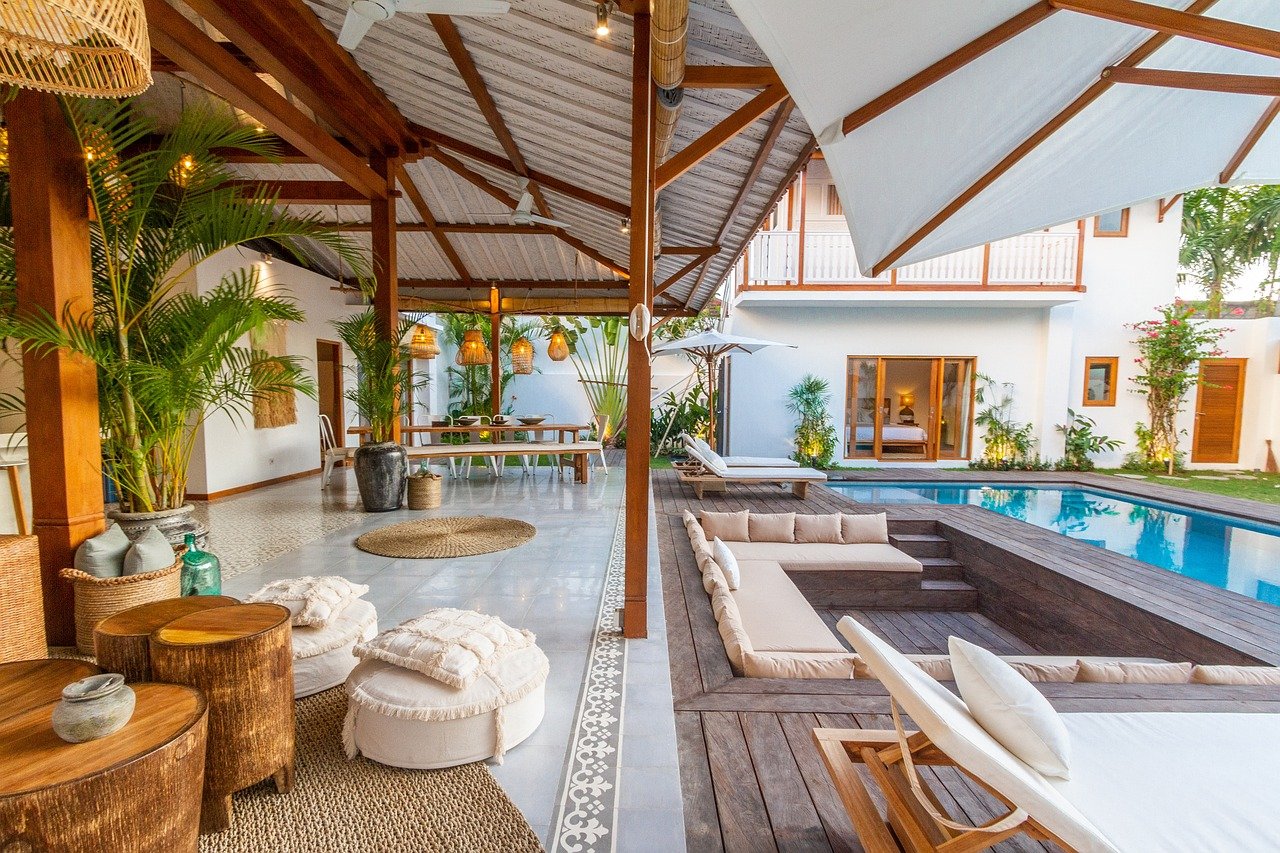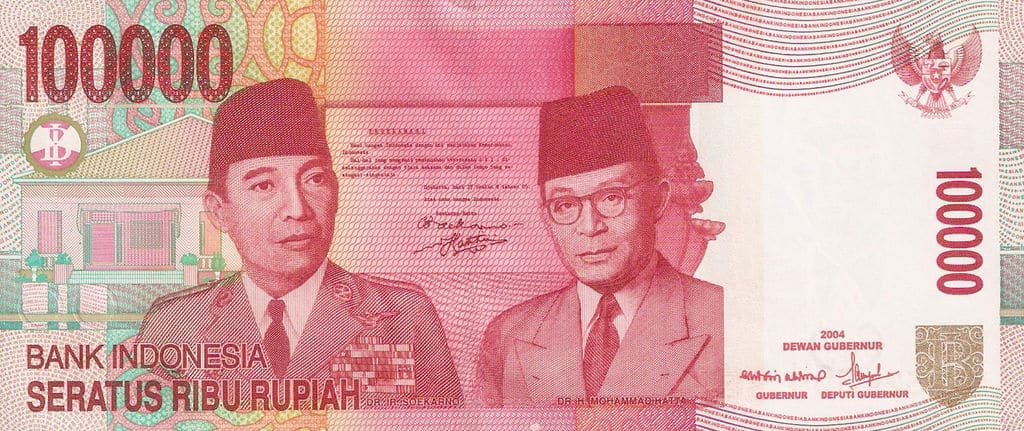Why is Bali so cheap? Uncovering the Reasons Behind the Low Cost of Traveling to Bali.
Why is Bali great value? There are many reasons Bali is a bargain right now…
Table of Contents Show
Why is Bali so cheap to visit and live?
Bali is great value, but watch out for the cute pickpockets!
Bali is famous for its stunning beaches, lush rice terraces, exotic temples, and vibrant culture. Bali attracts millions of tourists every year, making it one of the most popular travel destinations in the world.
Despite the island’s popularity among tourists, Bali has managed to maintain a surprisingly low cost of living. The cost of food, accommodation, and transportation in Bali is significantly lower than other popular tourist destinations like Paris, New York, or Tokyo.
In this article, we will explore the reasons behind Bali’s low prices and discover how you can enjoy a luxurious vacation in Bali without breaking the bank.
We’ll also discover how you can give back to Bali and the Balinese in meaningful ways while still enjoying a low-cost holiday.
1. Cost of living in Bali
Bali’s low prices for many items is a bonus for visitors
When it comes to the cost of living, Bali stands out as one of the most affordable destinations in Southeast Asia, making it an attractive option for budget travelers and expats alike.
Let's take a look at some comparisons just to get a feel for Bali’s prices.
Comparison of Bali’s prices to other cities in Indonesia and overseas
According to Numbio, Bali has a low cost of living, making it a cheap place to visit for tourists.
Bali vs the rest of the world
Bali has a cost of living index of 33.9 as calculated by Numbio, which is similar to Chiang Mai in Thailand at 33.0 and Casablanca in Morocco at 32.9.
More expensive places than Bali, Indonesia, include Phuket in Thailand (39.4), Guadalajara, Mexico (44.9), Rome, Italy (58.7), San Juan, Puerto Rico (73.7) and the most expensive place in the world to live, which is Hamilton, Bermuda (136.9).
Cheaper places than Bali, Indonesia, include India (eg: Delhi, Bangalore and Lucknow are in the mid-20's), Cairo, Egypt at 29.4
Interestingly, Ukraine and Russia are in the late 20's in terms of cost of living (cheaper than Bali). Nevertheless, many nationals from both countries are sitting out the war in Bali!
Bali vs Jakarta
According to comparison site Numbeo, rent and groceries are higher in Bali than Jakarta, Indonesia’s capital city. By contrast, restaurant prices are lower in Bali than Jakarta. Salaries in Bali are 34% lower than in Jakarta.
Bali vs Los Angeles
By comparison, Numbeo says the price of restaurants is 78% lower in Bali compared to Los Angeles, and groceries are 50% cheaper in Bali than in Los Angeles. The difference between these figures highlights the difference in labor costs and wages.
Bottled water
I always look at the price of bottled water as a comparison. In Bali, a medium bottle of Aqua costs around Rp5,000, which is around US 33 cents. This compares to the average price in the USA of 84 cents. In Australia, it is again more expensive at AUD $1.34. (source)
Within Bali, you'll find that prices can vary a lot depending on where you are. Tourist areas on the coast, like beach hotspots Kuta and Seminyak, and popular inland villages like Ubud, tend to be more expensive (but still great value for a westerner) than less visited places like Amed or Lovina in North Bali or Bali’s smaller islands, like Nusa Penida.
Explanation of the low living costs
The relatively low level of wages in Bali means businesses can offer goods and services at lower prices.
According to Statista, the minimum wage in Bali in 2022 was IDR 2.52 million ($170) per month. However, anecdotal evidence suggests the average salary in Bali is now around IDR 3 million ($200) per month.
This is still significantly lower than in other parts of the country, particularly in cities like Jakarta. This means that businesses can keep prices low while still making a profit.
The impact of low costs on tourism
The low prices in Bali make it an attractive destination for budget travelers and backpackers who are looking to stretch their budget further. This helps drive tourism to the island and supports the local economy.
Low labor costs. Locals receive relatively low salaries and wages and this reduces one cause of inflationary prices.
High supply of accommodations and services. Many hotels, and restaurants offer affordable rates and restaurant prices to attract budget-conscious travelers.
Cultural practices and values around bargaining and negotiating prices. Bargaining and negotiating prices are common practices in Bali, and this keeps prices competitive.
Competition between tourism businesses. High competition leads to lower prices and better deals for consumers.
All of these factors contribute to lower cost pressures on the Bali economy, which in turn leads to greater affordability for the tourism industry.
That is not to say that Bali does not face inflationary pressures. One example was the 30% reduction in the fuel price subsidy by the Indonesian Government in 2022, which translates into higher prices. As tourists, we noticed this as a necessary rise in the cost of transport because Bali drivers and other transport providers had to increase their prices to cover the increased cost of fuel.
It’s also important to note that there are also some downsides to low prices and Bali being a ‘cheap’ destination.
2. Low labor costs
Bali’s lower labour costs keep hotel prices lower
Compared to other countries, Bali's labor costs are relatively low. For example, the average daily minimum wage in Bali is around IDR 80,000 (approximately USD 5.50), while in Australia it is AUD 23.23 (approximately USD 14.80), and in Singapore it is SGD 74 (approximately USD 54).
This means that businesses in Bali can keep their costs down by hiring local workers at a lower rate. At the same time, hotels and resorts can charge similar rates per night to places like Australia, the US, and Singapore.
3. High supply of accommodation, restaurant meal and drink, and services
Bali has a huge supply of hotels, resorts, homestays and villas, which keeps prices competitive
Another reason Bali is a value-based destination for tourists is the high supply of accommodations, restaurants, and services. This leads to a very competitive landscape for tourism.
Comparison of Bali's supply of accommodations and services to other tourist destinations
When compared to other popular tourist destinations, Bali boasts a higher supply of accommodation options, restaurants, and tourism-related services.
The island has an abundant number of guesthouses, hotels, and villas that offer a range of prices and service levels to cater to any traveler's needs.
Furthermore, Bali's tourism industry is one of the most developed in Indonesia, with unparalleled access to tour guides, restaurants, and transportation networks.
Bali attracts millions of tourists every year. The high demand for accommodation in Bali has led to intense competition, resulting in lower prices for hotels. Many hotels offer great value for your money, with prices starting as low as $10 per night.
Resort, hotel and villa prices are generally lower in Bali due to lower land and labor costs compared to other popular tourist destinations.
Low prices for food and drinks in Bali also contribute to the lower overall cost of staying in a hotel.
Many hotels in Bali offer free breakfast to their guests, which can be a significant cost savings during their stay.
For those on a budget, staying in a hostel or budget hotel can be an affordable option. These options typically offer basic amenities but still provide a comfortable stay.
The impact of high supply on tourism and prices
The high supply of accommodations and tourism-related services in Bali has had a ripple effect on the island's tourism and its prices.
The abundance of accommodation options and tourism businesses has created intense competition, driving down prices and offering travelers affordable access to the island's beautiful attractions.
This competitive environment has made it possible for travelers to stretch their budgets and enjoy more luxurious experiences while in Bali.
4. Bargaining and negotiating prices are cultural norms in Bali
Shop ‘til you drop, but bargain fairly in Bali
As visitors to Bali will quickly learn, bargaining and negotiating prices for goods and services is an everyday occurrence. In fact, it is considered a cultural norm in Bali, where the act of bargaining is referred to as "tawar-menawar."
This cultural practice is deeply rooted in Balinese society and reflects the importance of social relationships and communication skills in the local culture. It is not only an opportunity for buyers to get a better deal, but also for both parties to engage in a social interaction that shows respect for each other.
Bali also loves offering discounts and happy-hour specials. This attracts the backpacker market and value-based tourists, who come for the party atmosphere, vibrant nightlife, and low prices generally.
5. Low flight and on-ground transportation costs
Get ready for takeoff with cheap flights to Bali!
Flights to Bali have been reasonably affordable because of the high volume of inbound tourists and the fact that air transport is the only viable way for most tourists to access Bali. This has resulted in reasonable competitiveness and, thus, lower prices.
Getting around Bali is generally inexpensive and easy. Taxis and ride-hailing services are readily available, and you can often negotiate affordable rates for longer day trips. You can also rent a scooter or motorbike for a low daily rate, which is a fun and cost-effective way to explore the island.
6. Lower costs for souvenirs, clothing and jewelry (but luxury goods are expensive)
Bali is a great place to buy locally made souvenirs, crafts, art, and jewelry. Bali is not a bargain for luxury goods and brands because these tend to be heavily taxed and have lower demand from the local population (although this is growing).
7. The strength of the United States dollar and other foreign currencies
The Indonesian rupiah trades lower than the US dollar and other major currencies, and this weakness gives tourists enhanced purchasing power.
8. Bali's location
Bali's perfect location close to the equator has an impact on why it is a low-cost destination. The warm weather provides the opportunity for accommodation styles that are less expensive to build, and this can help lower accommodation prices.
Restaurants can be open-air in style, which are also lower cost to build.
The warm climate provides an opportunity to grow produce in abundance, which reduces the price of these foods. Being less reliant on imported foods, at least for staple ingredients, gives Bali a competitive advantage over destinations in the South Pacific, like Fiji.
Finally, of course, the warm weather is a magnet for tourists seeking sun, waves and sea adventures, and this brings in millions of tourists annually, creating economies of scale for Bali’s tourism industry.
Protecting Bali’s environment for future generations is one of Bali’s key goals
Why is Bali great value?
In conclusion, Bali is great value for tourists for a number of reasons: low costs for essential items, low labor costs, high supply of accommodations and services, cultural practices and values around bargaining and negotiating prices, competition between tourism businesses, economic inequality between Bali and other countries all play a significant role in why Bali is a low-cost destination for tourists.
In return for a low-cost holiday, as visitors, we can enhance the benefit to the Balinese of our visit by traveling eco-consciously and with a mind toward placing our money in the hands of locals and small businesses wherever possible.
Frequently Asked Questions
How cheap is Bali to travel?
Bali can be cheap to travel to. It’s possible to enjoy a comfortable 7-day holiday in Bali for two people for US$1,000, not including flights. This will get you a hotel room for $100 if you eat in local warungs, hire a motorcycle for transport, and don’t need expensive tours. If you spend less on the hotel, you can put more toward food and activities.
How to get cheap Bali flights?
To get cheap flights to Bali, travel in the low season (October, January, or February), research low-cost airline options, try to use airline points programs, book well in advance, and use a tool like WayAway to research low-cost flights.
How to travel Bali cheap?
The way to travel Bali inexpensively is to stay in homestays (called ‘pondok wisata’), eat in local warungs, use local transport (called ‘bemo’), shop in markets rather than supermarkets (but be prepared to bargain), and network with other budget travelers for tips. Choosing lower-cost areas in Bali, such as Lovina, compared to Nusa Dua, will also keep your travel costs down.
What's cheap in Bali?
Things that are cheap in Bali include accommodation (in homestays), food (in local warungs and markets), handcrafts (in markets; bargain fairly), haircuts (a local cut will cost $1.50), massages, and gasoline (compared to many countries).
How cheap is Bali food?
Bali food can be very cheap. A simple snack-sized lunch of Nasi Jenggo (rice and vegetables) is Rp 5k (US 30 cents), a Nasi Goreng is Rp 15k (US 1), a Masakan Pedang (rice, vegetable, and fish or meat selection) is Rp 20k+ (US 1.30), a Pisang Goreng snack (per piece) is Rp 1,000 (US.06 cents), and a bottled iced tea is Rp 17,000 (US 1.10).
When is Bali cheapest?
Bali is cheapest in the low season, which is October, January, and February. Expect to pay 30–50% less for accommodations, and tour operators and car or motorcycle rental companies may offer specials. Food prices will not change, but you might get hotel and restaurant dining specials or add-ons in the low season.























Discover everything you need to know about Bali's new tourism tax before your next visit to this tropical paradise.